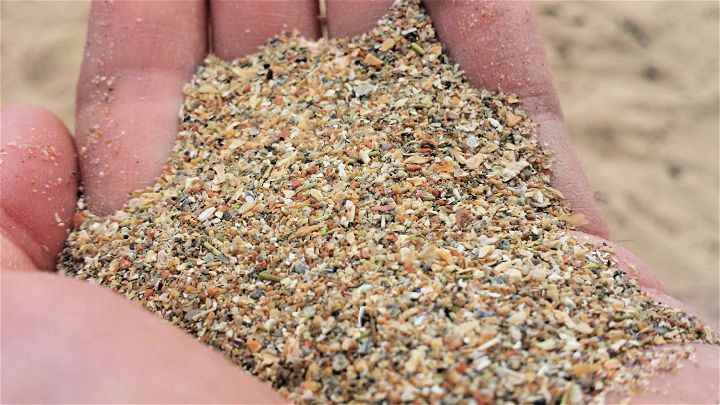Sand under a microscope reveals a wealth of fascinating textures, shapes, and patterns that are invisible to the naked eye. The different colors and formations of magnified sand grains can offer insights into the geologic processes that formed them. By studying magnified sand, we can better understand our planet’s history and the forces that continue to shape it.

How Does Sand Look under a Microscope?
Sand under a microscope appears as a collection of tiny, disparate particles. Each grain is unique in shape and size, with some being perfectly round while others are more irregular. Some have smooth surfaces, while others are rough or pitted. The colors of magnified sand can also be quite varied, depending on the type of rock from which it came.
Despite their small size, the individual grains of magnified sand are actually quite complex in structure. Each one is composed of many smaller mineral crystals that have grown and fused together over time. The different minerals that make up sand give it its unique color, texture, and other properties.

So, the next time you’re at the beach, take a closer look at the sand beneath your feet. Magnified, sand under a microscope is a whole new world!
Beach Sand under a Microscope
Beach sand looks very different magnified under a microscope! You can see all sorts of fascinating textures, shapes, and patterns that are invisible to the naked eye. The individual grains of sand take on all sorts of different colors and form interesting patterns. Under a microscope, sand is truly a unique and beautiful sight!

Desert Sand under a Microscope
We often think of sand as being made up of tiny, uniform grains.
Under a microscope, desert sand looks like a colorful mosaic of different minerals. Each grain of sand is unique, and the colors and patterns can vary depending on the type of rock the sand came from.
Magnified sand grains can provide scientists with clues about the geology of a region. By studying the composition of sand, they can learn about the types of rocks that are found in an area and how they have been eroded over time.
Grains of Sand Magnified
Sand under a microscope looks like a tiny, bumpy rock. The bumps are called “pits,” and each one is actually a tiny crater. The craters are formed by collisions with other grains of sand or by the impact of raindrops.
The surface of a grain of sand is also covered in tiny scratches. These scratches are caused by the sand grains rubbing against each other in the wind.

Sand Zoomed In
When magnified, the sand zoomed in becomes a whole new world of shapes and patterns. Under a microscope, each grain is an intricate work of art. The colors and textures are mesmerizing.
Magnified Sand Grains
No two grains of sand are alike. Each one is unique in its shape, size, and color. When magnified, the beauty of each grain is revealed.
Fascinating Shapes and Patterns
The shapes and patterns that are magnified sand are truly fascinating. They are unlike anything you would see with the naked eye. Each grain is a work of art.
Colors and Textures
The colors and textures of magnified sand are truly mesmerizing. Each grain is unique in its color and texture. No two grains are alike.
Sand Magnified 400x under a Microscope
Under a microscope, sand magnified 400x looks like a myriad of tiny, sharp-edged crystals. The shapes of the crystals vary depending on the type of sand, but they are all incredibly intricate and beautiful. Each grain of magnified sand is unique, and together they create a stunning pattern.

Sand Magnified 250x under a Microscope
Under a magnifying glass, sand appears as a collection of tiny, uniform granules. But look closer through microscope sand magnified 250x, and you’ll see that each grain of sand is actually quite unique.
On a microscopic level, sand grains can have all sorts of different shapes, sizes, and colors. Some are smooth and round, while others are sharp and jagged. And while most sand is a pale color, some grains can be quite colorful, ranging from black to red to green.

All of these sand under a microscope variations make for some interesting patterns and textures when magnified. So the next time you’re at the beach, take a closer look at the sand beneath your feet – you might be surprised at what you find!
